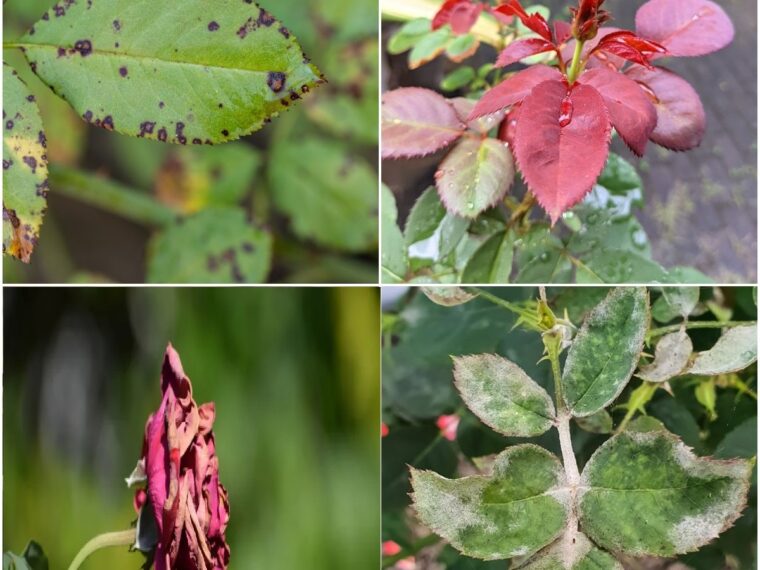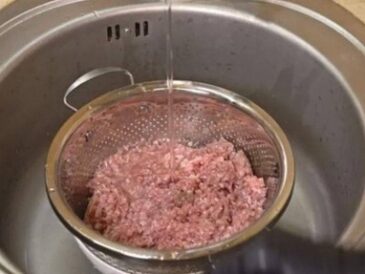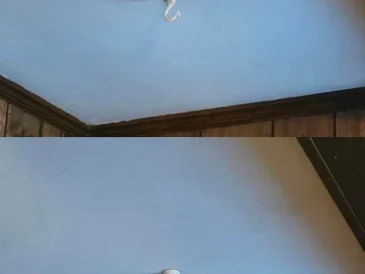Rose Rosette Disease

This funny-sounding disease is only found in North America. (For now.) However, despite its name, rose rosette disease is no laughing matter. Discovered back in the 40s, it has slowly spread throughout the states and into Canada. It only affects roses, but it is devastating when it does.
Symptoms:

Rose rosette disease, or RRD, causes abnormal growth, including witches’ broom-like clusters of shoots, bright red discoloration of leaves that don’t turn green, and distorted flowers. You’ll likely notice an excess of thorns as well. It is spread by eriophyid mites.
Treatment:

Unfortunately, there is no treatment, and once infected, roses with RRD need to be removed and destroyed to prevent the spread of the mite and the virus it carries. Dig up the plant, including the roots and surrounding soil and burn or put it in the garbage. Under no circumstances should it be composted.
Rust

Oh, look, another fungus that affects roses. I think it’s safe to say that roses do not do well in damp weather. This is one of the reasons why it’s so important that they be planted in a space where they receive plenty of sunlight.
Symptoms:
Rust appears as orange or rusty brown spots on the undersides of leaves and sometimes on stems. It weakens the plant, making it more susceptible to other diseases and pest damage and can lead to fewer blooms.
Treatment:
You probably already know what I’m going to say here, so I won’t repeat myself. If you need a refresher, see the treatment for both powdery mildew and black spot.
Thrips

Another insect that loves to feast on your beautiful rose blooms are thrips. And like aphids and spider mites, they can find your roses both inside your home and outdoors.
Symptoms:
Thrips are tiny, slender insects that feed on rose buds and flowers. Once the thrips have fed on the bud, it may not open at all, or if it does, the resulting flowers can be discolored or oddly streaked.
Treatment:
Prune and dispose: As soon as you notice thrips or evidence of their damage, remove infested buds and flowers and dispose of them.
Apply insecticidal soap (again, the best insecticidal soap is often the simplest, a couple of drops of liquid dish detergent mixed with water) or neem oil: These products can help control thrip populations.
Encourage natural predators: Introduce beneficial insects like predatory mites or minute pirate bugs.
Rose Bush Not Flowering
This one is a bit tougher to diagnose, as it can be caused by any number of issues or a combination of them. The most likely causes, however, are not enough sunlight, pruning issues, nutrient deficiencies or stress from pests or disease.
Symptoms:
Well, this one is kind of obvious.
Treatment:
Pruning: Properly prune in the late winter or early spring to encourage healthy growth and flowering. During the blooming period, deadhead roses often stimulate new growth and more blooms.
Fertilize: Apply a balanced fertilizer formulated for roses in spring and after the first bloom cycle.
Ensure adequate sunlight: Roses generally require at least 6 hours of direct sunlight daily for optimal flowering. If your bushes are in a spot that isn’t getting enough light, you may need to wait for them to go dormant and move them.
Winter Damage
Depending on where you live, severe winter weather and freezing temperatures can cause damage to your rose bushes that show up the following spring. While there isn’t a whole lot you can do after the fact, there are steps you can take to prevent your roses from sustaining damage during the colder off-season.
Symptoms:
Winter damage often shows up the following spring when portions of the plant die back or show cracks in the canes from frost.
Treatment:
Prevention, prevention, prevention. If you live in a growing zone with cold weather, protect your roses in the fall by applying mounding soil around the crown of the plant. Then, apply a thick layer of mulch around the base of your roses. This will protect the roots from freezing. You may also wish to wrap the plants in burlap to shield them from heavy winds.
Prune roses in late winter to remove winter or cold-damaged canes and to encourage new growth and blooming.
Nutrient Deficiencies

Roses are heavy feeders. They need plenty of the right nutrients to provide blooms throughout the growing season continuously. If you aren’t replacing lost nutrients each year, you can quickly run into problems with your plants. Different nutrient deficiencies show up with different symptoms.
It’s generally good gardening wisdom to test your soil, especially if you aren’t actively adding compost or other organic matter to the soil each year.
Symptoms:
- Nitrogen deficiency: Pale green or yellow leaves, stunted growth.
- Phosphorus deficiency: Poor root development, dark green or purple tinted leaves.
- Potassium deficiency: Weak stems, yellowing and curling leaf margins.
Treatment:
Fertilize: Apply an organic balanced fertilizer with micronutrients, adjusting based on soil test results.
Organic matter: Add compost, leaf mold, well-rotted manure and other organic matter each year. As it slowly breaks down, it will improve the soil. You may also want to try inoculating your plant with mycorrhizae. These beneficial microbes can make nutrients in the soil more readily available to the rose bushes.
Foliar feeding: Some liquid fertilizers can be applied directly to the leaves for quick nutrient uptake. However, some nutrients are more readily absorbed through the leaves than others.




